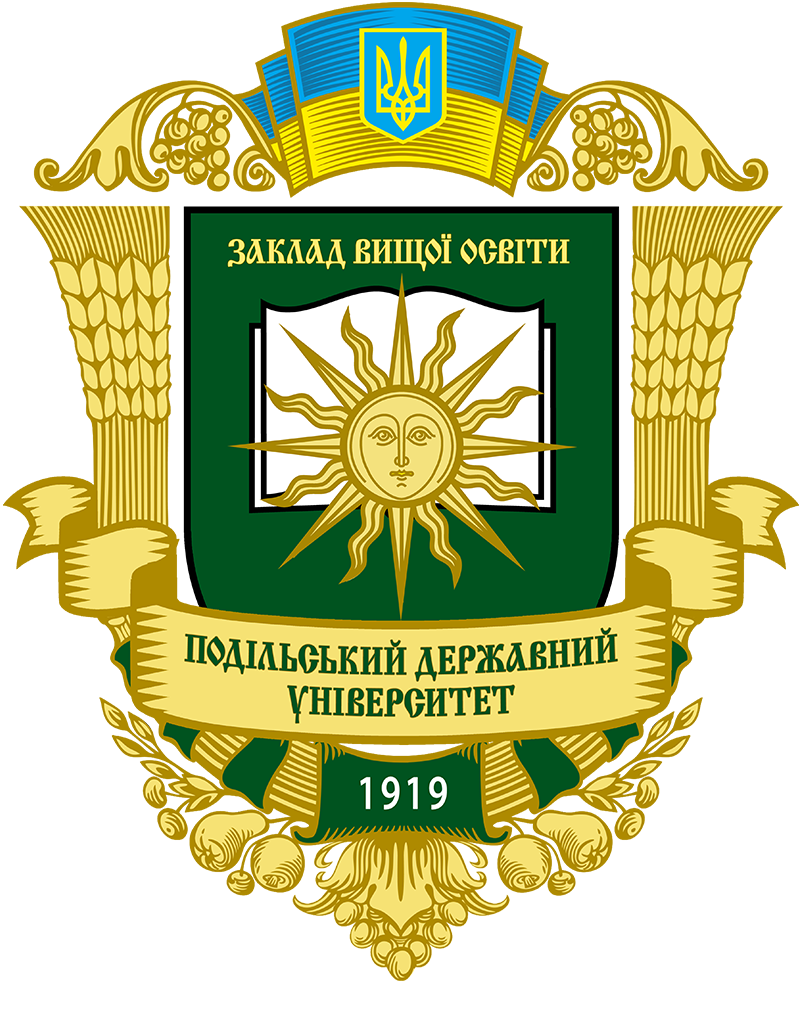EFFECTIVENESS OF VARIOUS METHODS OF ADMINISTRATION OF ANTIBIOTICS IN COMPREHENSIVE SCHEMES OF TREATMENT OF COWS FOR POST-CALVATIONAL ENDOMETRITIS
DOI:
https://doi.org/10.37406/2706-9052-2025-1.37Keywords:
cow, uterus, endometritis, antibiotic, infection, exudate, therapy, inflammation, fertilityAbstract
Post-calvation diseases of the uterus are a serious problem of dairy cows, as they can affect a significant proportion of the population and have serious consequences for the reproductive ability of females and milk production. Therefore, the prevention and timely and effective treatment of puerperal complications should be considered as an important link in the system of measures to eliminate infertility and barrenness of cows. The paper presents the results of clinical and experimental studies on the regional use of antibiotics and stimulating drugs in comprehensive treatment schemes of cows for post-calvation endometritis. The basis of rational etiotropic and pathogenetic therapy was regional administration of drugs: into the internal iliac artery, paravaginally and intravaginally. Comprehensive and sequential treatment regimens for patients with endometritis in cows were scientifically substantiated, developed and tested. Clinical studies have shown that combined regional administration of enrofloxacin and metronidazole in combination with prostaglandin and a uterotonic drug turned out to be a more effective method of treating cows with purulent endometritis than their intramuscular injections. Injection of antimicrobial drugs into the main vessel that feeds the uterus allows to significantly concentrate their pharmacological action in the pathological focus. At the same time, the fertility of cows increased, the proportion of disease recurrence decreased, and the treatment period was shortened. Such a rational approach to improving therapy protocols allows reducing drug costs, which ensures its optimal pharmacoeconomic indicators. It was established that the combined administration of “broestrophan” and “docitol” due to the synergy of their action ensured active evacuation of exudate from the uterus and luteolysis, which positively affected the results of treatment and restoration of the reproductive function of cows.
References
Боднар О. Ефективність терапії корів за післяотельного гнійного ендометриту залежно від способу введення препаратів. Аграрний вісник Причорномор’я. 2021. Вип. 101. С. 40–43. https://doi.org/10.37000/abbsl.2021.101.07.
Боднар О. Аналіз взаємозв’язків показників клітинного імунітету організму корів за післяотельного ендометриту. Подільський вісник: сільське господарство, техніка, економіка. 2020. № 33. С. 166–171. https://doi.org/10.37406/2706-9052-2020-2-18.
Боднар О.О., Керничний С.П., Захарова Т.В., Боднар О.О. Реґіонарне застосування антибіотиків та препаратів йоду в комплексних схемах лікування корів за гнійного ендометриту. Науковий вісник Національного університету біоресурсів і природокористування України. 2016. Вип. 237. С. 149–158.
Спосіб лікування гнійного ендометриту у корів : пат. 85115 Україна. № 03110 ; заявл. 23.03.2007 ; опубл. 25.12.2008. Бюл. № 24. 3 с.
Amin Y.A., Abdelaziz S.G., Said A.H. Treatment of postpartum endometritis induced by multidrug-resistant bacterial infection in dairy cattle by green synthesized zinc oxide nanoparticles and in vivo evaluation of its broad spectrum antimicrobial activity in cow uteri. Research in Veterinary Science. 2023. Vol. 165. P. 105074. https:// https://doi.org/10.1016/j.rvsc.2023.105074.
Benzaquen M.E., Risco C.A., Archbald, L.F., Melendez P., Thatcher M.J., Thatcher W.W. Rectal temperature, calving-related factors, and the incidence of puerperal metritis in postpartum dairy cows. 2007. J. Dairy Sci. Vol. 90. P. 2804–2814. https://doi.org/10.3168/jds.2006-482.
Boyanova L., Kolarov R., Mitov I. Recent evolution of antibiotic resistance in the anaerobes as compared to previous decades. Anaerobe. 2015. Vol. 31. Р. 4–10. DOI: https://10.1016/j.anaerobe.2014.05.004.
Deori S., Phookan A. Bovine Postpartum Metritis and its Therapeutics: A Review. Indian Journal of Science and Technology. 2015. Vol. 8 (23). P. 1–5. 10.17485/ijst/2015/v8i23/52386.
Dingsdag S.A., Hunter N. Metronidazole: An update on metabolism, structure–cytotoxicity and resistance mechanisms. J. Antimicrob. Chemother. 2018. Vol. 73. Р. 265–279. https://doi:10.1093/jac/dkx351.
Ghanem M.E., Tezuka E., Sasaki K., Takahashi, M., Yamagishi N., Izaike Y., Osawa T. Correlation of blood metabolite concentrations and body condition scores with persistent postpartum uterine bacterial infection in dairy cows. 2016. J. Reprod. Dev. Vol. 62. P. 457–463. https://doi.org/ 10.1262/jrd.2015-103.
Haimerl P., Arlt S., Borchardt S., Heuwieser W. Antibiotic treatment of metritis in dairy cows – A meta-analysis. 2017. J. Dairy Sci. Vol. 100. Р. 3783–3795. https://doi: 10.3168/jds.2016-11834.
Haimerl P., Heuwieser W. Invited review: Antibiotic treatment of metritis in dairy cows: a systematic approach. J. Dairy Sci. 2014. Vol. 97. Р. 6649–6661. https://doi.org/10.3168/jds.2014-8462.
Hernández Ceruelos A., Romero-Quezada L.C., Ruvalcaba Ledezma J.C., López Contreras L. Therapeutic uses of metronidazole and its side effects: an update. Eur Rev Med Pharmacol Sci. Jan. 2019. Vol. 23 (1). Р. 397–401. https://doi:10.26355/eurrev_201901_16788.
Jeremejeva J., Orro T., Waldmann A., Kask K. Treatment of dairy cows with PGF2α or NSAID, in combination with antibiotics, in cases of postpartum uterine inflammation. Acta. Vet. Scand. 2012. Vol. 54. Р. 45. https://https://doi.org/10.1186/1751-0147-54-45.
Le Blanc S.J. Review: Postpartum reproductive disease and fertility in dairy cows. Аnimal. 2023. Vol. 17. Sup. 1. Р. 100781. https://doi.org/10.1016/j.animal.2023.100781.
Machado V.S., Bicalho M.L.S., Gilbert R.O., Bicalho R.C. Short communication: Relationship between natural antibodies and postpartum uterine health in dairy cows. 2014. J. Dairy Sci. Vol. 97. Р. 1–5. https://doi.org/ 10.3168/jds.2014-8393.
Maris A.S., Brewer D.J., Humphries R.M. The Fluoroquinolones: An Update for the Clinical Microbiologist. Clinical Microbiology Newsletter. 2021. Vol. 43 (12). P. 97–107. https://doi.org/10.1016/j.clinmicnews.2021.06.001.
Masera J., Gustafsson B.K., Afiefy M.M., Stowe C.M., Bergt G.P. Disposition of oxytetracycline in the bovine genital tract: systemic vs intrauterine administration. J. of the Am. Vet. Med. Assoc. 1980. Vol. 176. Р. 1099–1102.
Parmar K.H. Endometritis in Bovine : A Review. Agricultural Reviews. 2021. Vol. 42 (3). Р. 342–347. https://doi.org/10.18805/ag.R-2038.
Reissier S., Penven M., Guérin F. Recent Trends in Antimicrobial Resistance among Anaerobic Clinical Isolates. Journals Microorganisms. 2023. Vol. 11 (6). https://doi.org/10.3390/microorganisms11061474.
Sheldon I.M., Owens S.E. Postpartum uterine infection and endometritis in dairy cattle. In Proceedings of the 33rd Annual Scientific Meeting of the European Embryo Transfer Association (AETE). Bath. UK. 8–9 September. 2017. Vol. 14. Р. 622–629. http://doi.org/10.21451/1984-3143-AR1006.
Sheldon I.M., Williams E.J., Miller A.N., Nash D.M., Herath S. Uterine diseases in cattle after parturition. Vet J. 2008. Vol. 176. Р. 115–121. https://doi.org/10.1016/j.tvjl.2007.12.031.
Sheldon I.M., Rycroft A.N., Znou C. Association between postpartum pyrexia and uterine bacterial infection in dairy cattle. Vet Rec. 2004. Vol. 154. P. 289–293. https://doi.org/10.1136/vr.154.10.289.
Smith B.I., Donovan A., Risco C., Littell R., Young C., Stanker L.H., Elliott J. Comparison of various antibiotic treatments for cows diagnosed with toxic puerperal metritis. J. Dairy Sci. 1998. Vol. 81. Р. 1555–1562. https://doi.org/10.3168/jds.S0022-0302(98)75721-2.
Várhidi Z., Csikó G., Bajcsy Á.C., Jurkovich V. Uterine Disease in Dairy Cows: A Comprehensive Review Highlighting New Research Areas. Journals Veterinary Sciences. 2024. Vol. 11 (2). 66. https://doi.org/10.3390/vetsci11020066.
Wybo I., Van den Bossche D., Soetens O., Vekens E., Vandoorslaer K., Claeys, G., Glupczynski Y., Ieven M., et al. Fourth Belgian multicentre survey of antibiotic susceptibility of anaerobic bacteria. 2014. J. Antimicrob. Chemother. Vol. 69. Р. 155–161. https://doi.org/10.1093/jac/dkt344.










